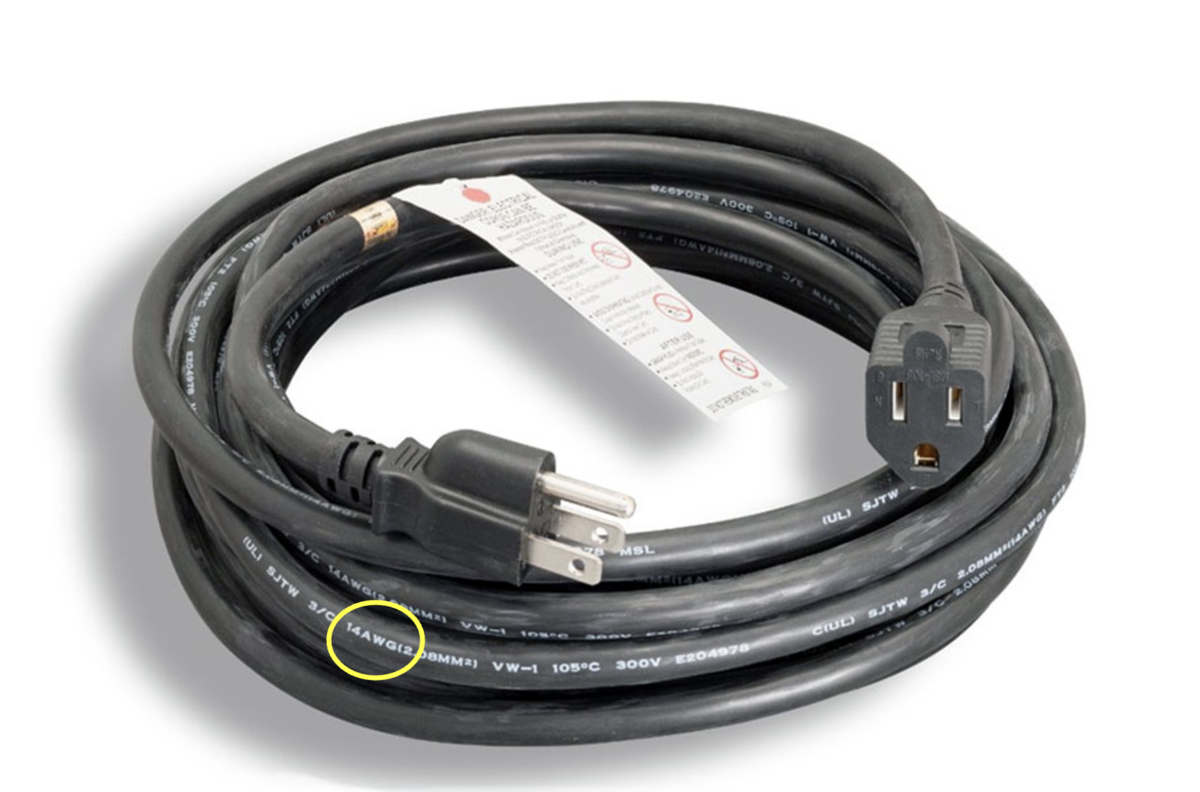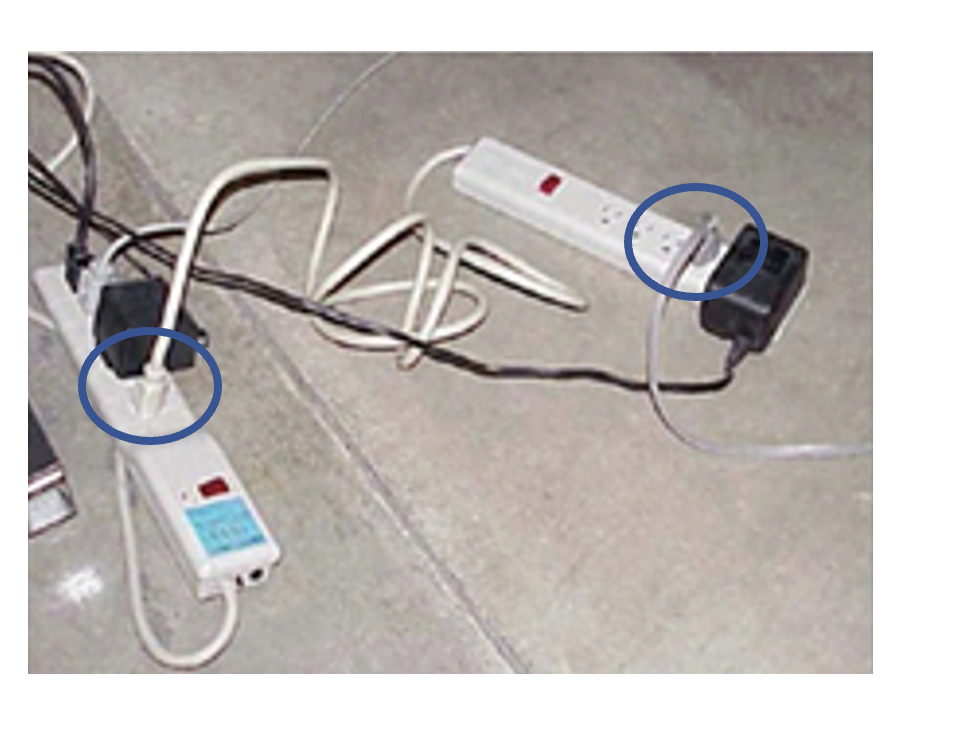The U.S. Consumer Product Safety Commission (CPSC) estimates that electrical power cords cause about 4,000 injuries and 3,300 residential fires each year. The most frequent causes of such fires are short circuits, overloading, damage and/or misuse of these power cords. Misused and damaged power cords have caused painful injuries, fires, equipment damage and regulatory citations and penalties. Even the smallest amount of electrical current can cause injury or even death.
Any damaged, unwanted electrical cords or electronic waste items that do not contain data can be sent to Emory Surplus Services by submitting a work order through Campus Services Work Management (cscsc@emory.edu). Electronic waste that contains any data must be picked up by LITS.
Use Power Strips and Extension Cords Properly
Inspect all electrical cords and power strips for DAMAGE before use. If the cord is damaged, immediately remove the cord from service, cut it up and discard – DO NOT USE IT!
Ensure extension cords are properly rated for their intended use and meet or exceed the power needs of the appliance being used. If any part of the extension cord is “hot” while in use, this may be an indication that the cord is being overloaded and powering equipment beyond its rated capacity. The capacity of an extension cord, or power rating, can be identified by looking at the tag on the cord or its packaging.
Never use an extension cord designed for household use in a laboratory or office area. Emory recommends using extension cords with a minimum of 14-gauge wiring (14 AWG), depending on the power needs of the connected equipment. The wire size is printed on the cord’s surface.
Use surge protectors to protect sensitive equipment, such as computers, printers, cell phones and similar desktop equipment.
Only use cords that have been listed by a recognized national testing laboratory, such as Underwriters Laboratories (UL), Intertek (ETL) or CSA-International (CSA).
Do not use extension cords or power strips with fans, pumps or appliances with heating elements or compressors. Plug this type of equipment directly into a wall outlet. Extension cords may supply less power, which can cause the equipment to overheat or malfunction.
Do not substitute extension cords for permanent wiring. Extension cords are only acceptable to provide power to equipment on a temporary basis. If more outlets are needed in your laboratory, submit a work request to Facilities.
Do not connect more than one power strip or surge protector into one, single duplex wall outlet.
Avoid using 2-prong to 3-prong adapters. A plug adapter that is grounded will not provide protection against an ungrounded electrical box or a faulty appliance, possibly creating an electrocution or shock hazard.
Never plug extension cords or power strips into one another. This is called “daisy-chaining” and can overload the circuit creating a potential fire hazard.
Contact EHSO if you have any questions or need assistance in determining a safe layout for your equipment. Let’s work together to keep Emory safe!









